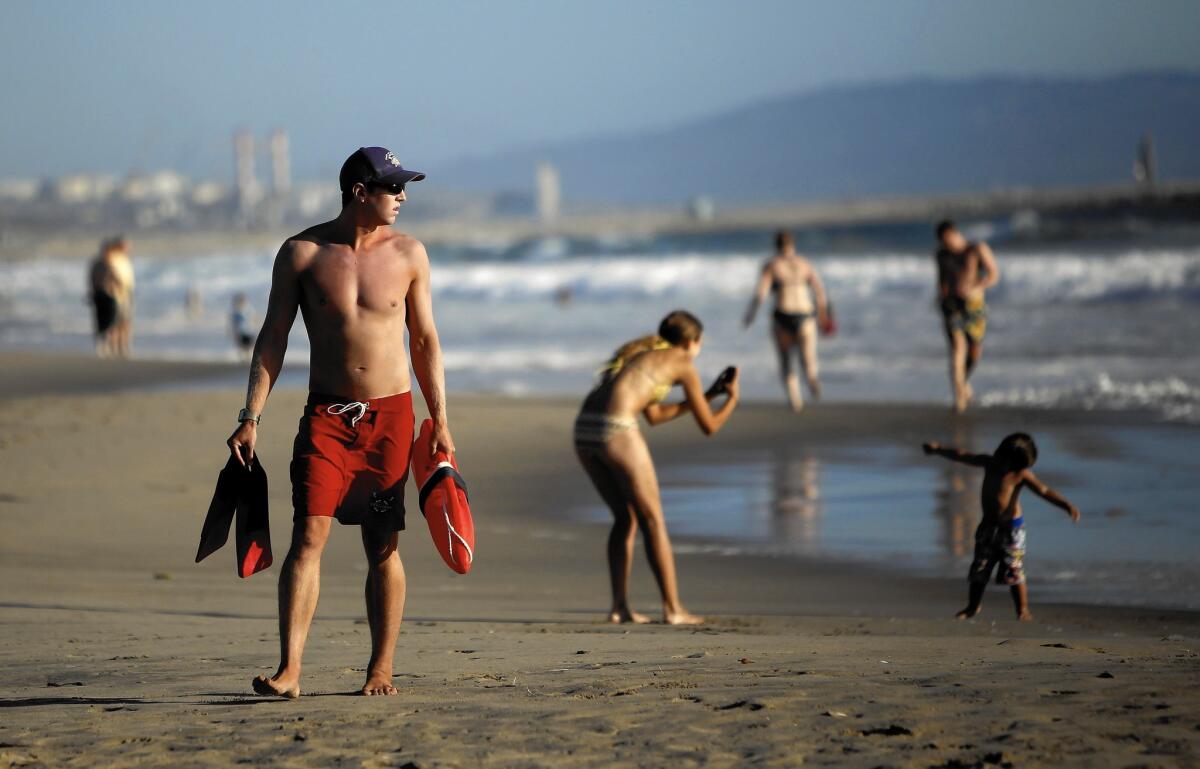California’s warm 2014 brings something else: more beach rescues

- Share via
Here’s another byproduct of California’s unusually warm 2014: more lifeguard rescues at local beaches.
Busy lifeguards
As of Nov. 3, Los Angeles County lifeguards have already rescued more people in 2014 than they have in any single year in the department’s history, officials said.
Lifeguards have made 14,331 ocean rescues so far this year, breaking the record of 14,096 set in 1997.
Acting Chief Lifeguard Steve Moseley said the consistently warm weather this year and unusually tumultuous surf have combined to draw more people to the beach.
During the peak of a heat wave in September, lifeguards made 187 rescues in a single day — 88 of them at Venice Beach alone.
At the same time, California is experiencing its warmest year since record-keeping began. The weather has brought nearly 70.5 million people to the county’s beaches this year — 15 million more than the average.
Warmer waters
Experts have also noted warmer ocean waters this year.
“They’re about as warm as anything we’ve seen over the past 30 years,” said Nate Mantua of the National Oceanic Atmospheric Administration’s Fisheries Science Center.
He said California ocean temperatures could be anywhere from five to nine degrees warmer than the historical average.
As a result, jellyfish have been spotted farther north than they usually go.
Unusual creatures
The warm waters are also bringing out sea creatures not seen in some time along the California coast.
In Monterey Bay, scientists say they’ve seen more long-beaked common dolphins as well as sunfish and velella velellas.
The velella velellas — transparent blue creatures — have also been spotted in Orange County, along with yellowfin tuna and hammerhead sharks.
“These are strange times,” Chris Lowe, a professor and head of the Shark Lab at Cal State Long Beach, told the Orange County Register.
Hazards below
A year of strong Pacific storms has eroded the some Southern California beaches more than usual, causing erosion.
The corrosive effects have allowed dips in the sea floor to edge closer to the shoreline, creating the strong rip currents that pull swimmers out to deeper water. Lifeguards say that has contributed to the increase in rescues.
More to Read
Sign up for Essential California
The most important California stories and recommendations in your inbox every morning.
You may occasionally receive promotional content from the Los Angeles Times.











